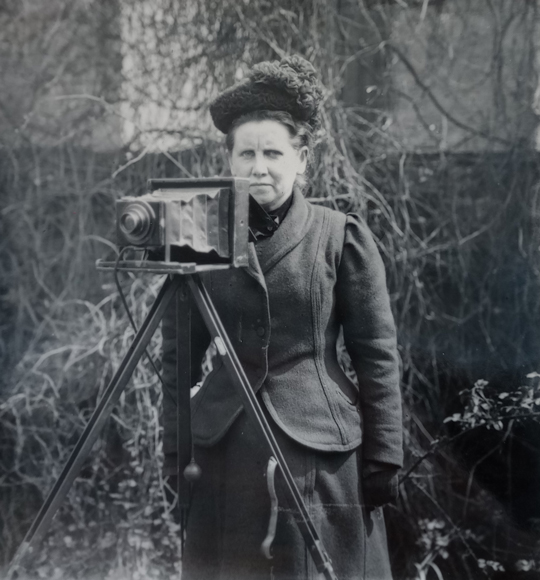08/08/2024
New blue plaques for photography trailblazers Christina Broom and John Thomson
Britain's first female press photographer, Christina Broom, and early photojournalist, John Thomson, commemorated with blue plaques.
Two pioneering photographers will be commemorated with blue plaques today (8 August). The first marks the Fulham home of Christina Broom, believed to be Britain's first female press photographer; while in Brixton, the second plaque honours John Thomson, a ground-breaking photojournalist working at the advent of the medium.
English Heritage Historian, Rebecca Preston, said, 'These two very different photographers were both pioneers in their own right, both working at the forefront of photography at a time when it was not the accessible medium that it is now.
'I am delighted to celebrate them today, each at an address associated with the very pinnacles of their respective careers.'

Despite only making her first experiments in photography at the age of 40, with a borrowed quarter-plate box camera, Christina Broom went on to become the most prolific female publisher of picture postcards in Britain.
She was a prominent photographer of the suffrage movement; the only woman photographer allowed into London barracks; and the only photographer regularly permitted into the Royal Mews.
Her plaque at 92 Munster Road – a terraced house of 1896 – is the first blue plaque in Fulham, where she lived and worked for 26 years.
From this house, without a public-facing studio or shop, Mrs Broom and her daughter Winifred ran her photographic business. At their busiest, mother and daughter produced 1,000 postcards per day.
When she was interviewed in her drawing room in 1937, the reporter from Westminster and Chelsea News was 'confronted with hundreds of prints from a selection of some of the thousands of negatives – many of them irreplaceable – that are stored elsewhere in the house'.
Broom died at number 92 in 1939 and her daughter remained there until she died in 1973.

John Thomson was a leading photographer, geographer, travel writer and explorer.
His seminal work, Illustrations of China and its People (1873-4), charted his travels through more than 4,000 miles from Hong Kong to the Yangtze-Kiang, via Canton and the Great Wall, creating a far broader panorama of Eastern culture than had previously been seen in the West.
With the permission of King Mongkut of Siam, he took the first-known photographs of the ruins of Angkor Wat in 1866 and the reproduction of his photographs, particularly the innovative combination of text and image, was a landmark in the history of illustrated books.
Thomson and his family moved to what is now 15 Effra Road in Brixton in the 1870s.
While living in this terraced house in 1875-6, (formerly known as 12 Elgin Gardens) Thomson published one of his best-known and influential works, Street Life in London (1877-8).
With its cast of street characters, such as Covent Garden flower sellers, Italian musicians and 'Hookey Alf of Whitechapel', Street Life has been reprinted many times since.
Thomson was convinced that photography was 'absolutely trustworthy' in its ability to convey accuracy and truth.
'We are now making history', he wrote in 1891, 'and the sun picture supplies the means of passing down a record of what we are, and what we have achieved in this 19th century of our progress'.
- Other photographers commemorated by the Blue Plaques Scheme include Bill Brandt, Lee Miller, Camille Silvy and Cecil Beaton.
- The English Heritage London Blue Plaques scheme is generously supported by David Pearl and members of the public.